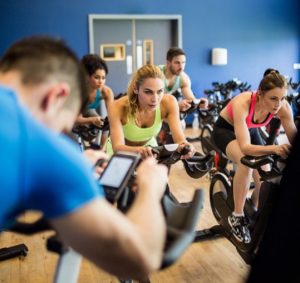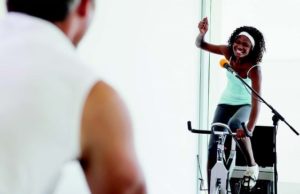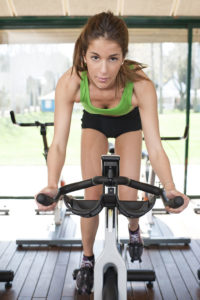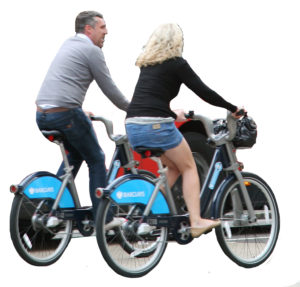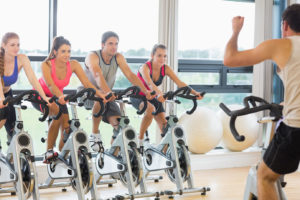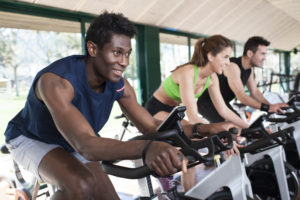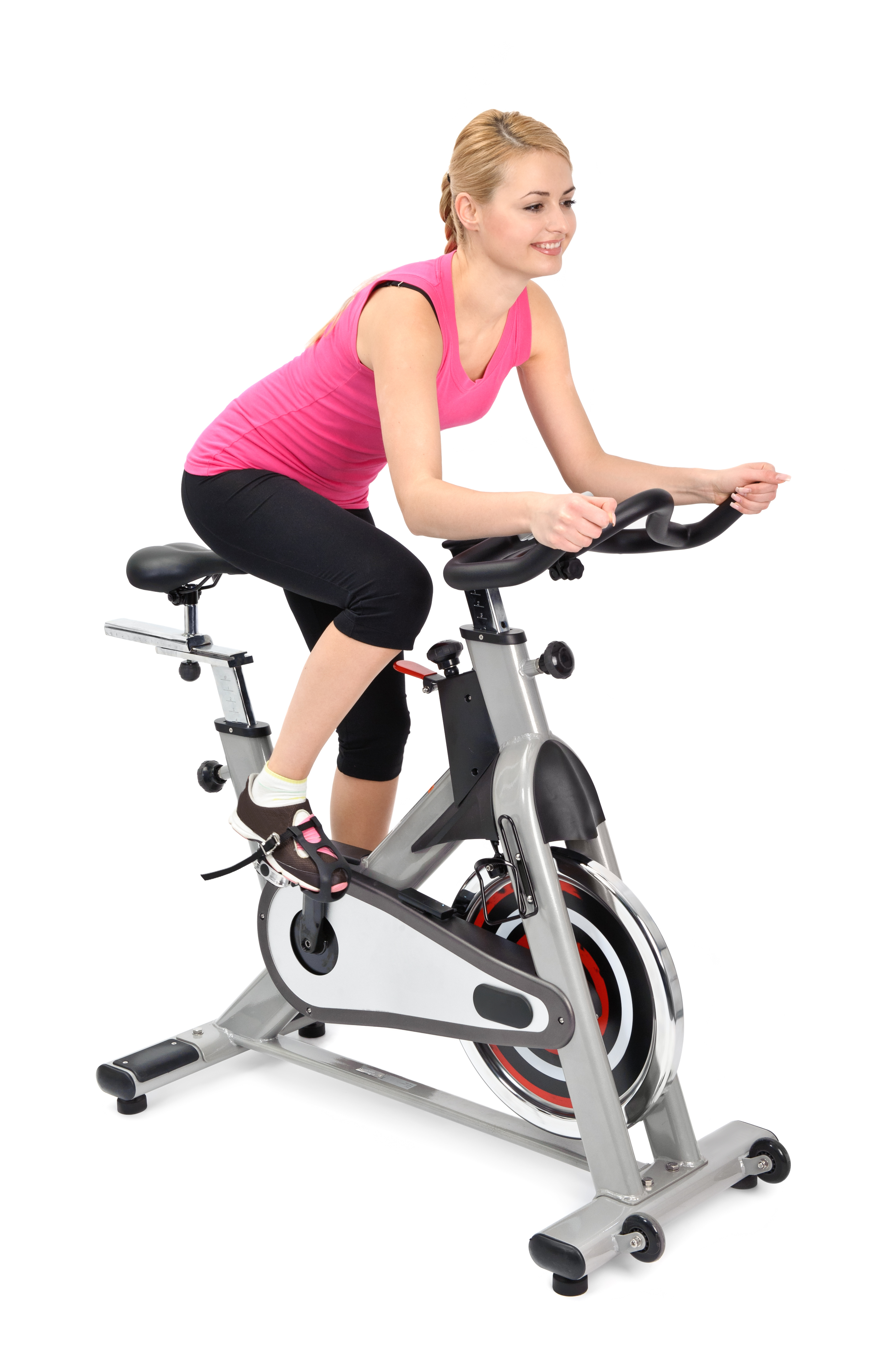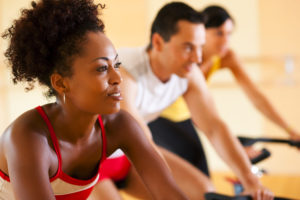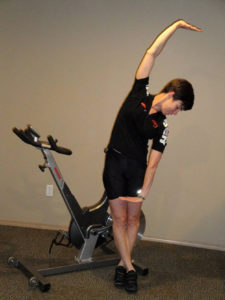Cycling
Bike to Work, Live Longer
Here’s another way to keep the grim reaper at bay: According to experts, ditching the car or bus in favor of active commuting—especially biking—to work may reduce the risk of early death.
Researchers looked at the records of 263,450 participants (mean age 52.6 years) in the United Kingdom and logged information about how they regularly commuted to work. Five years later, the study assessed hospital visits and deaths among subjects.
Fewer Repetitions Means Better Results?
Short-duration workouts have become popular over the past several years as the time-crunched seek out effective ways to exercise. Recent research adds more support for the benefits of fast workouts and indicates that less may even be more, provided you have appropriate equipment.
Crystal-Clear Cuing for Indoor Cycling
Walk by any indoor cycling studio when a class is in session and you're likely to hear a variation of the following:
"I want everyone at a 2!"
"Push yourself to a 7 and hold it there for 30 seconds!"
"Let's start at a 3, turn up to 6, and then come back to a steady 4. Go!"
The key to unlocking a fantastic cycling class is somewhere in those numbers, but your members may find themselves shut out if they don't know what you're referring to.
Cycling Segues
The last chapter of a novel ties all the previous pages together in one simple, dramatic or thought-provoking conclusion. An indoor cycling class is not unlike a good read. You have an attention-grabbing warm-up, various engaging “chapters” that explore cardio ranges, and a cool-down that seamlessly brings it all together. Without all three elements, a book—or an exercise class—may never make it onto the “best-seller list.”
Cycling Class Etiquette
A cycling instructor wears many hats: coach, trainer, motivator and mentor. But one title many of us would happily relinquish is “enforcer.” It’s never a pleasant job to police workout etiquette. From time to time, though, situations arise that must be dealt with. Knowing what to do, or at the very least knowing how to respond, can make tricky cycling studio dilemmas less uncomfortable and easier to manage. Here are effective responses to some sticky situations.
Sample Class: Cycle Diversion
You spend so much time making play- lists and designing your indoor cycling classes, but there are days when the creativity doesn’t flow or you’re asked to sub last minute. The following class not only demonstrates the power of cuing and careful drill selection; it also helps you multitask. For example, mix and match this ride by taking one stage and adding it to a preexisting class. Other options: Use two of the stages for 30-minute classes, or use all three for a complete ride.
Cycle Diversion Details
Top Five Cycling Class Etiquette Blunders
A cycling instructor wears many hats: coach, trainer, motivator and mentor. But one title many of us would happily relinquish is “enforcer.” It’s never a pleasant job to police workout etiquette. From time to time, though, situations arise that must be dealt with. Knowing what to do, or at the very least knowing how to respond, can make tricky cycling studio dilemmas less uncomfortable and easier to manage. Here are effective responses to five sticky situations.
Texting During the Ride
Cycle Strong
While the legs may be the stars of the show in indoor cycling, the core is the vital foundation that affects all movement, including the pedal stroke. A solid core helps eliminate unnecessary upper-body movement so that riders can focus and deliver energy for a smooth and powerful pedal stroke. Most cyclists will agree that, whether you’re riding inside or out, the core is the power center for efficiency. These five functional moves strengthen the core muscles and improve overall performance. All you need is 5 minutes before or after your next indoor cycling class.
London’s “Cycle Hire Scheme” Proves Beneficial
In 2010, London launched a cycle hire scheme, which lets residents and visitors rent bicycles to get around the city. Currently there are more than 8,000 bikes and 550 docking stations. However, concerns over rider safety and pollution intake have grown among Londoners. A recent study looked at whether the risks outweigh the health and fitness benefits from increased physical activity.
Sample Class: The Perfect Party Ride
Where’s the party? In your cycling class! This segmented ride allows participants to discover their thresholds, stay fully engaged and leave feeling empowered. Ask three questions throughout class to ensure that participants know what’s expected at each stage and can therefore give their best effort:
What’s the goal?
How long is the drill?
How should it feel?
The Perfect Ride Details
Sample Class: 3 x 3 Progressive Cycling Circuits
Most cycling class participants walk away dripping in sweat, satisfied knowing they got a highly effective cardio workout. But do they have any sense of making progress from session to session–or even improvement within a single session? Do they have a specific goal they can reach in 1 hour and immediately celebrate? Give participants palpable proof of progress with this easy-to-follow formula designed to challenge all levels!
The Formula
From Music Educator to Boutique Studio Owner
Steven Burnes, Australian-born founder and owner of Aussie Fitness Pilates and Spinning Studio in Fort Lauderdale, Florida, reinvented his career in October 2008, after 22 years as a professional musician and high-school and college music teacher. The Peak Pilates® master instructor supplements his studio practice with teacher training and indoor cycling classes.
Cycling Program Sees Significant Growth
What started as a desire to find a physically and spiritually fulfilling workout has turned into a successful business.
SoulCycle®, a full-body workout that combines “inspirational coaching and high energy music” in a dark, candlelit setting has experienced healthy growth since its first studio opened in 2006.
The Proper Preparation
When it comes to warm-ups, indoor cycling instructors often fall victim to the “oatmeal effect”—good for you, but not very memorable. It’s easy to just jump on a bike and ride. However, with a little creativity and skillful instruction, you can engage participants from the start. Be prepared, connect with riders and add a little ingenuity. Begin with a warm welcome and a short introduction, and then ride into one of the following warm-ups.
A Magical, Musical Bike Tour
Up until the late 1990s, cardio workouts shared a similar vibe: shiny, Lycra®-clad bodies stepped, kicked and punched to high-energy dance music. Music was motivational but often generic. Cuing techniques…
A Smoother Ride
You’re not likely to find a line of members waiting to use the bike on the gym floor; however, indoor cycling classes often have waiting lists. Why do members flock to ride in a group setting? Because a cycling class is much more than a workout: it’s an experience. A great cycling class is a confluence of motivation and technique from the instructor and inspiration from the music. Here are 10 tips from top teachers—and a few astute cycling class members—for giving your students the ride of their lives.
Finish the Hill
My former race coach used to encourage our cycling team to “finish the hill,” to ensure we didn’t power down prematurely. As you start your indoor cycling cool-down, that can be a great reminder for both you and participants. Allowing your instruction to relax completely as class winds down can be detrimental; participants may respond by losing interest, leaving, or turning it into a social networking opportunity and ignoring you.
Frequent Cycling May Be Bad for Sperm Health
Males concerned with fertility might want to step off the bike and supplement with other forms of physical activity. A report published in Fertility and Sterility (2011; 95 [3], 1025–30)…
Urban Cycling Healthier Than Driving
Concerns over car exhaust inhalation and traffic accident risks may seem cause to avoid bicycling in urban areas. However, a recent study suggests that the benefits may outweigh those risks. The report was published ahead of print in the journal Environmental Health Perspectives (doi:10.1289/ehp.0901747).
More Than Just Legs: Refining the Ride
When people want to explain how simple something is to learn, they often say, “It’s like riding a bike!” But is riding a bike really that simple? If you think so, and you’re an indoor cycling teacher, you may be neglecting crucial form cues that would help students enjoy a more efficient, injury-free ride. This sagittal plane activity isn’t as cut-and-dried as it may seem. There are many opportunities for misalignment, discomfort and poor form. A good way to approach form cues is by addressing the body in four zones, from head to toe.
- « Previous
- 1
- 2
- 3
- Next »

